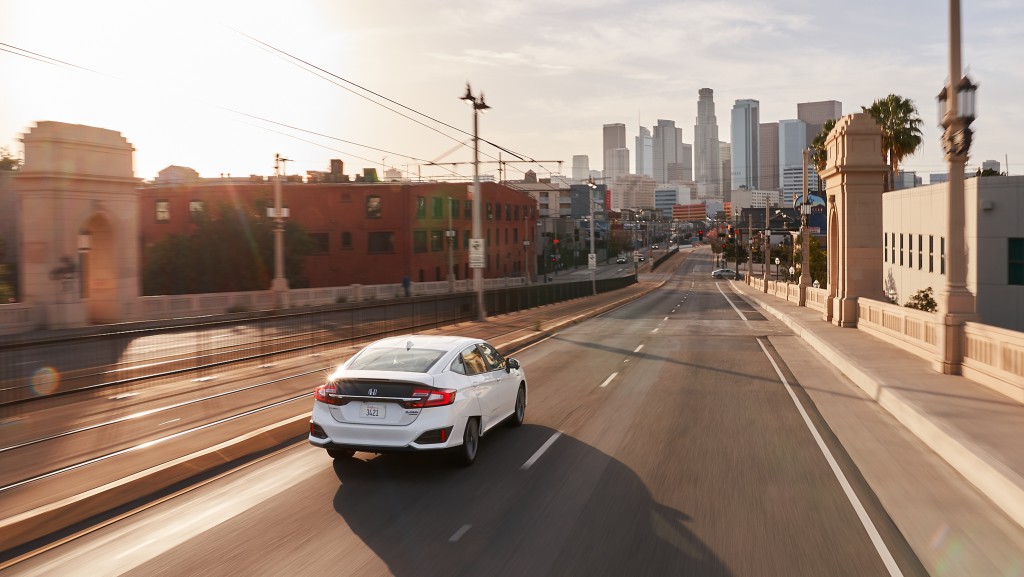Views
Reducing Greenhouse Gas Emissions Is Our Responsibility

Nearly 50 years ago, as unprecedented levels of pollution choked the nation's largest cities, a group of Honda automobile engineers set out to develop engine technology that would significantly reduce pollution from automobiles. The 1970 U.S. Clean Air Act established new requirements for tailpipe emissions, and while a number of automakers opposed the new rules, our engineers embraced the challenge as Honda’s responsibility to reduce tailpipe emissions that contribute to pollution.
This month, Honda voluntarily entered into a binding agreement with California that will reduce nationwide greenhouse gas emissions from our automobiles beyond levels required by law. This decision has drawn international attention and is – perhaps not surprisingly – a frequent topic of inquiry from both inside and outside our company. People have asked me why Honda chose to do this – particularly now, at such a challenging time for our industry. The answer comes down to responsibility.
Honda has long recognized that the products we create to enhance our customers’ lives are not without ecological consequence. And we take this matter seriously. Reducing the environmental footprint of our products – whether the smog-forming exhaust of 50 years ago, or climate-impacting greenhouse gas emissions that are the focus today – is critical in our design criteria, and we take pride in our decades-long leadership in these areas. You could say our decision to enter into this agreement is wholly consistent with our company DNA.
That’s not to say it will be easy. Achieving society’s climate goals necessitates a profoundly challenging and still uncertain industry transformation toward electrified vehicles that demands significant sustained investment. These headwinds must also be navigated amidst other capital intensive industry revolutions, including connected, automated and shared mobility.
Despite these challenges, we remain focused on addressing climate change. The agreement with California represents a reasonable, cost-effective compromise between relaxed federal standards, and California’s more stringent standards, which 13 other states follow. The result will be greater emissions reductions at a lower cost, while building momentum toward more electrified vehicles in the coming years.
As part of our goal to achieve a reduction in CO2 emissions that contribute to climate change we are targeting a 50 percent reduction in our total CO2 footprint by 2050, compared to year 2000 levels. This challenge is the foundation for our investment in the technologies we are applying to our vehicles today, and those we are developing for tomorrow.
Today, Honda holds the distinction of being America’s most fuel-efficient, low-emissions automaker, according to the U.S. EPA. That means our existing vehicles have the lowest CO2 emissions of any full-line automaker. Electrification is one of the critical technologies we are deploying to further reduce greenhouse gas emissions.
The decision to voluntarily over-comply is not just about our long-term commitment to address climate change. It also is a conscious commitment to our customers. Simply put, this agreement enables Honda to produce vehicles that will meet emissions standards in all 50 states, rather than attempting to meet a patchwork of regulations that would result in increased costs for our customers.
In that respect, the agreement is a win-win for the environment and our customers: we will continue pursuing our goal to address climate change while providing products of the highest quality and value to our customers.
Finally, Honda entered into this voluntary agreement for another reason. It makes good business sense. Regulatory uncertainty and varied state-by-state emissions requirements all undermine our ability to efficiently plan and deliver quality products to our customers at a competitive price. This agreement gives us clarity that allows us to sidestep much of that, and instead focus our attention on meeting our customers’ needs.
Honda has always believed that the purpose of technology is to help people. Nearly 50 years ago, a team of our engineers took a positive attitude toward the environmental challenge of air quality and created a new engine that made Honda the first automaker to meet the strict new clean air requirements without requiring a catalytic converter to treat the exhaust.
This remains our approach today, as we take a positive approach toward climate change and the critical effort to reduce greenhouse gas emissions.
Error: You currently have access to a subset of X API V2 endpoints and limited v1.1 endpoints (e.g. media post, oauth) only. If you need access to this endpoint, you may need a different access level. You can learn more here: https://developer.x.com/en/portal/product